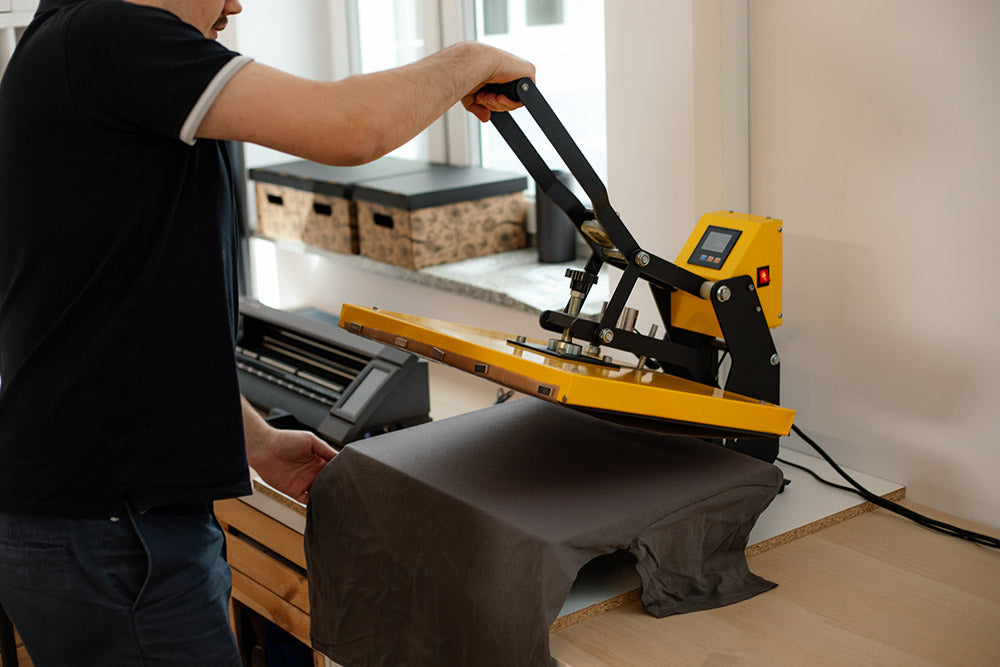When it comes to printing images on fabric, there are a few different ways to go about it. Two of the most common garment printing methods are sublimation and DTF (direct to film). Both methods provide quality images, but there are pros and cons to each. One important difference is how long the images last after printing. Does sublimation printing last longer than DTF? Here’s a comparison to help you determine which type of printing would be best to meet your goals.
What is Sublimation Printing?
In sublimation printing, the ink moves from a solid state directly to a gas without ever becoming a liquid. This allows the ink to bond with the fibers of the fabric in such a way that you won’t even feel the image on the shirt. The texture of the material doesn’t change. The image is printed on sublimation paper and then transferred from the paper to the fabric.
What is DTF Printing?
Direct to film printing (DTF) uses liquid ink to print an image onto transfer paper (film). Adhesive powder is applied to the film and then it is transferred to the fabric. Once it is dry you will be able to feel the image on the fabric. It is soft to the touch, but the texture is different from that of the plain, unprinted fabric.
How Long Do the Images Last?
In some cases DTF images may last longer than sublimation images. By “last longer” it means that the image stays vibrant and avoids fading, peeling, or cracking. In other cases, sublimation images may last longer. The longevity of an image printed on fabric depends on a variety of factors.
Factors That Affect Image Longevity
How long an image lasts on a shirt or other garment depends on the following factors:
- Printing method. Some printing methods produce longer lasting images than others. DTF tends to last longer than sublimation because the ink stands out from the fabric. In sublimation printing the ink blends in with the fabric so that it can fade as the fabric fades. However, sublimation images start out more vibrant to begin with, allowing room for some fading before the overall appearance suffers.
- Quality of the ink. Not all ink is the same quality. The higher quality of ink that is used in either printing method, the longer the image will last. With the right ink, an image printed with sublimation could last longer than a DTF image printed with lower quality ink.
- Quality of the printer. The quality of the printer itself will affect the longevity of the image that is printed. Some printers are designed to be fast in order to create large quantities of garments, but the quality may suffer the more quickly they are made. Consider your printing goals before choosing a printer.
- Type of fabric. Sublimation printing works best on polyester or polyester blends with at least ⅔ polyester. DTF printing works on nearly any kind of fabric. Synthetic fabrics like polyester tend to resist fading for longer than cotton, so a DTF image on cotton may fade faster than a sublimation image on polyester.
- Washing methods. Washing affects the longevity of an image no matter how it is printed. The more you wash a garment, the more faded it will become. Using mild detergent, especially those that are designed to minimize fading may help your image to last longer. Hand washing may even be a better option to resist fading.
Choosing the Best Printing Method for Your Goals
If your goal is to create a wide variety of printed garments in many different styles, DTF may be the best printing method for you. If your goal is to create realistic, high definition printed images, sublimation may be your best choice. When it comes to printing long lasting images, the biggest factor is the quality of your ink and equipment.
All Printheads Has Everything You Need for Apparel Printing
Whether you decide to go with sublimation printing or DTF, All Printheads has the supplies you need from printers to ink to transfer paper. Contact us or browse our products at allprintheads.com today.

